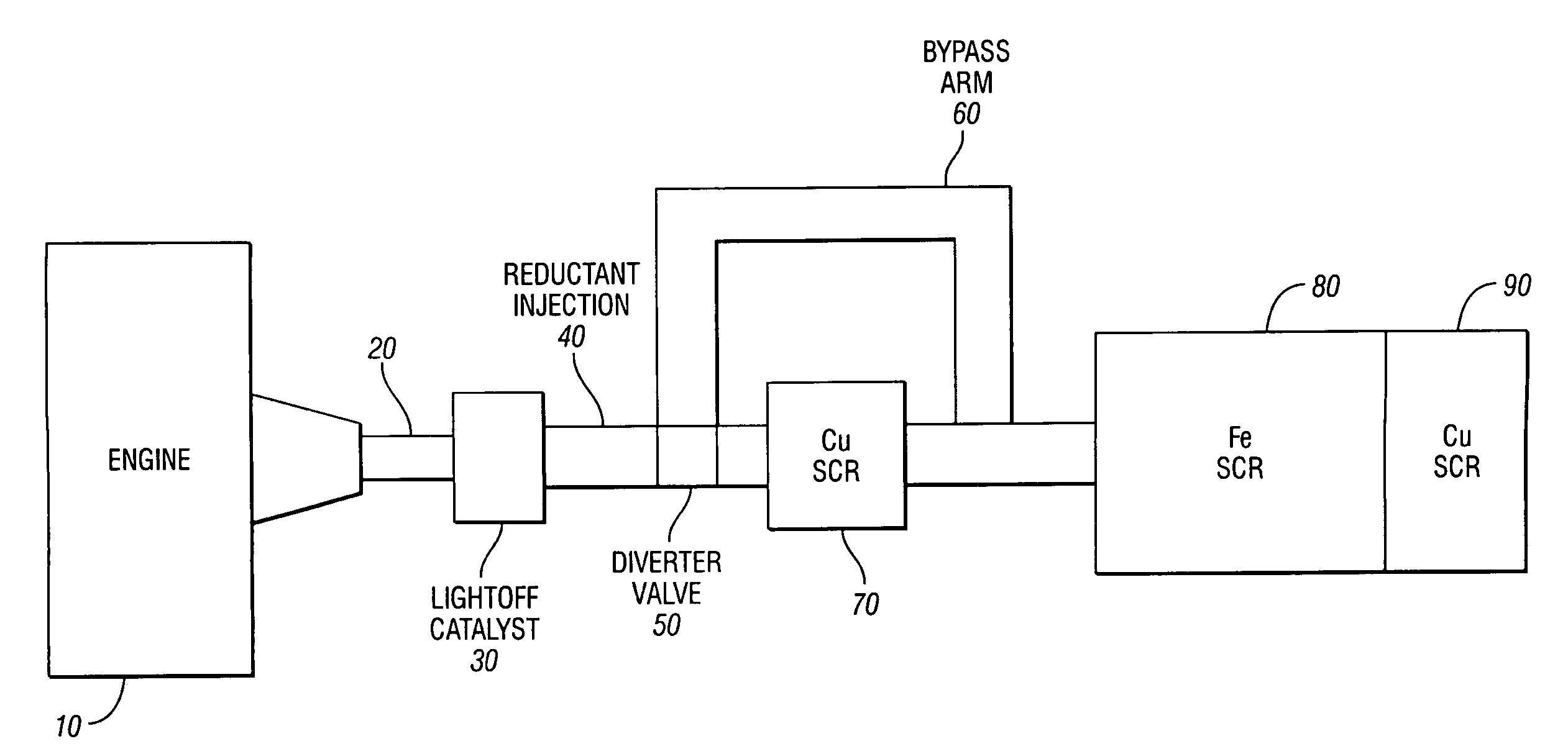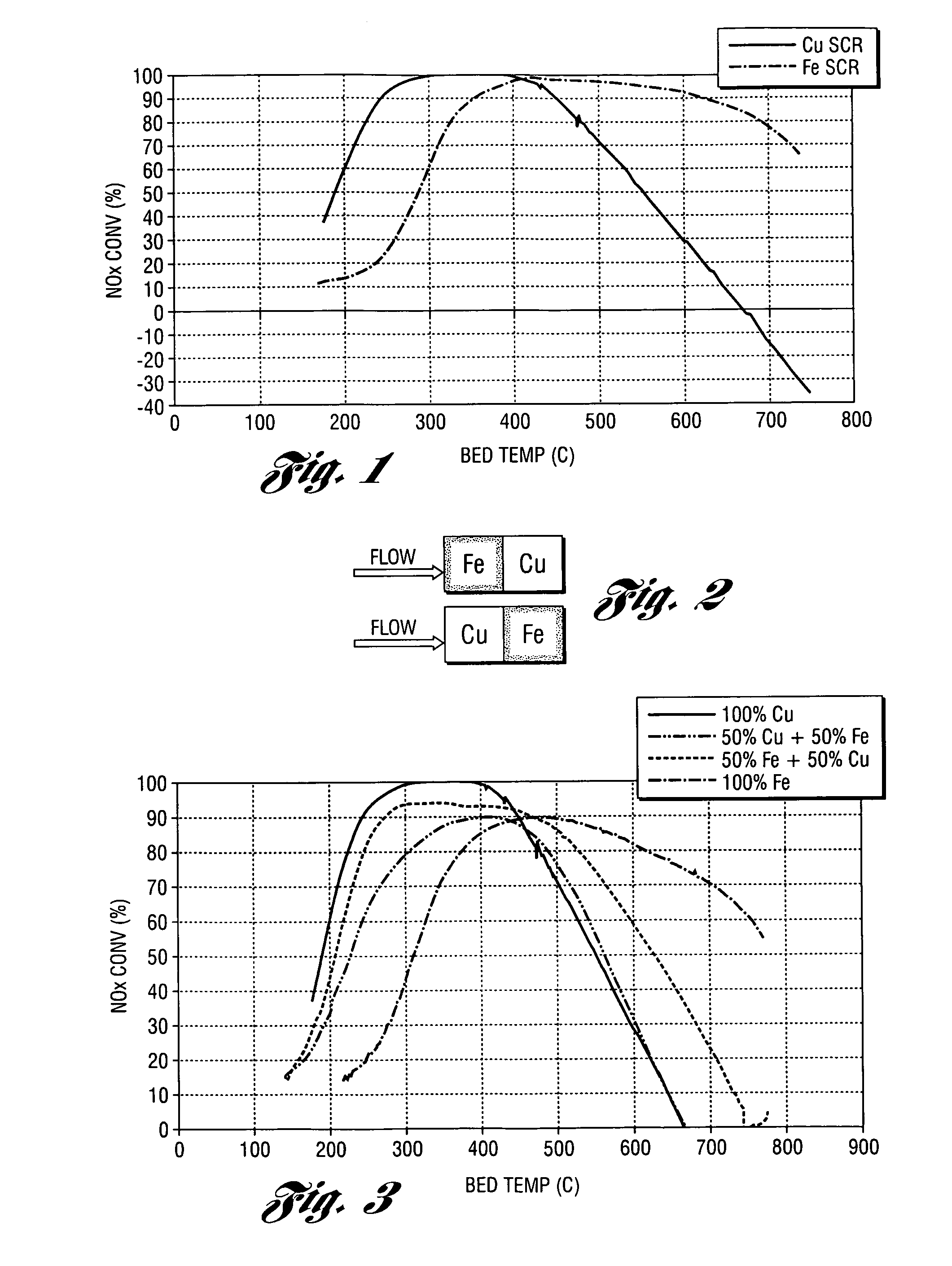Selective catalytic reduction catalyst system with expanded temperature window
- Summary
- Abstract
- Description
- Claims
- Application Information
AI Technical Summary
Benefits of technology
Problems solved by technology
Method used
Image
Examples
Embodiment Construction
)
[0026]To date, two different SCR formulations are being developed for vehicle applications. One uses copper (Cu) as the active element, and the other uses iron (Fe) as the active element. Cu-based SCR catalysts generally work better than Fe-based SCR catalysts at low temperatures, while Fe-based SCR catalysts are generally more effective at high temperatures.
[0027]To demonstrate, slow temperature ramps were performed under lean conditions at 25K hr−1 with a leading Cu SCR catalyst and a leading Fe SCR catalyst after the SCR catalysts were aged behind a TWC for 34 hrs in lean exhaust with an inlet temperature of 800° C. During the ramps, the NO and NH3 concentrations were both controlled at 500 ppm. FIG. 1 compares the temperature windows of the two SCR catalysts. The Cu SCR catalyst reduces NOx with an efficiency at or above 90% between 250° C. and 450° C., while the Fe SCR catalyst reduces NOx with an efficiency at or above 90% between 355° C. and 625° C. Above 670° C., the Cu SCR...
PUM
| Property | Measurement | Unit |
|---|---|---|
| Fraction | aaaaa | aaaaa |
| Fraction | aaaaa | aaaaa |
| Fraction | aaaaa | aaaaa |
Abstract
Description
Claims
Application Information
 Login to View More
Login to View More - R&D
- Intellectual Property
- Life Sciences
- Materials
- Tech Scout
- Unparalleled Data Quality
- Higher Quality Content
- 60% Fewer Hallucinations
Browse by: Latest US Patents, China's latest patents, Technical Efficacy Thesaurus, Application Domain, Technology Topic, Popular Technical Reports.
© 2025 PatSnap. All rights reserved.Legal|Privacy policy|Modern Slavery Act Transparency Statement|Sitemap|About US| Contact US: help@patsnap.com



